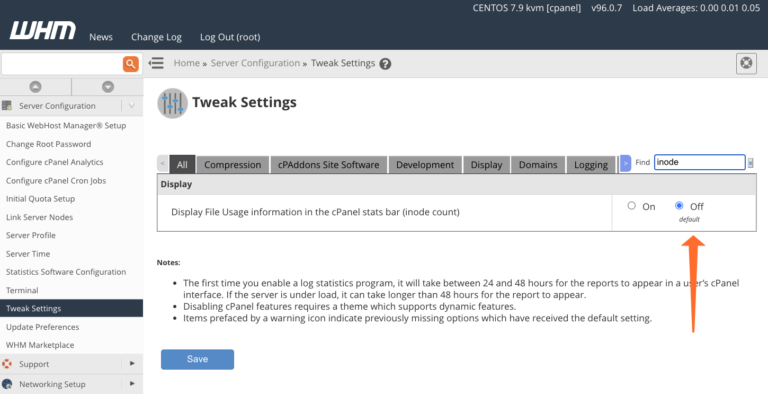Fragility and strength
To look at her recent work, you might never suspect just what a challenging time it’s been for photographer and OM SYSTEM Ambassador Michaela Skovranova. [Article courtesy of OM SYSTEM]
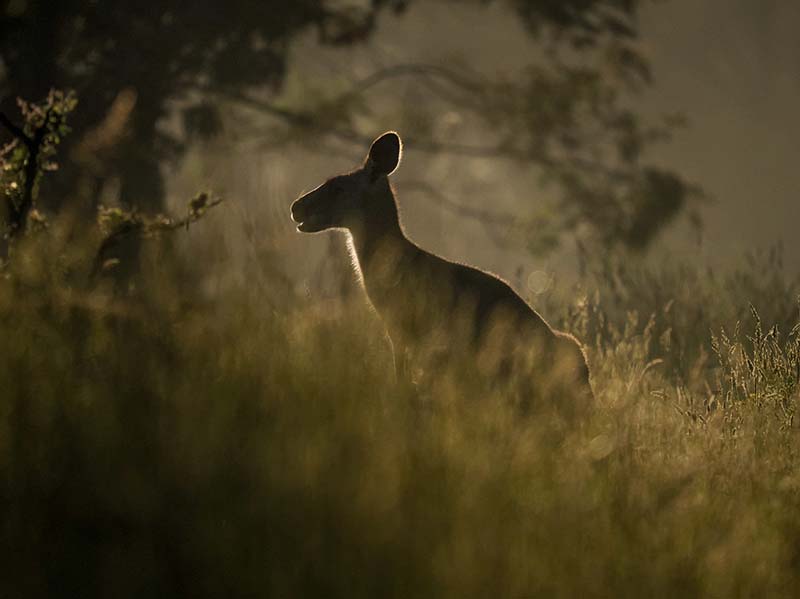
‘The past two years have been incredibly challenging for so many of us,’ she said. ‘I think this is the first time (in our lifetime) we have collectively endured so much loss and pain. Many of us leaned into nature to help us get through the difficult times and I very much did the same, even if more often than not it was from my bedroom window.’
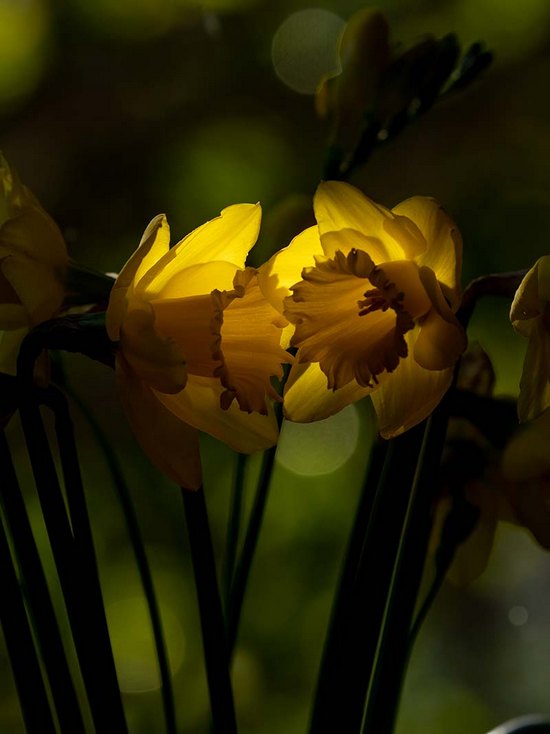
Along with the anxiety of a pandemic, Michaela also had to contend with a protracted, debilitating illness. ‘The quiet moments right on my windowsill’, she added, ‘from spectacular sunsets to little bird visitors, brought me so much relief and joy. It solidified my love for the healing nature of our environment even further.
‘When you are living in pain, the world around you tends to disappear but when the fog lifts it feels like you are experiencing the world for the very first time. These surreal experiences very much flowed into my work in a nuanced way. I feel a lot more present in my work.
‘I have also very much embraced the concept of “exploring my own backyard” even more.
‘The lightweight nature of the OM SYSTEM has played a major role in this as even during some of my weakest moments I was still able to use my camera, even if it was for a brief moment. I never wanted to lose that.’
Amazingly, despite the headwinds of illness, Michaela has managed to work on a significant new body of work she calls End of the World/Antarctica.
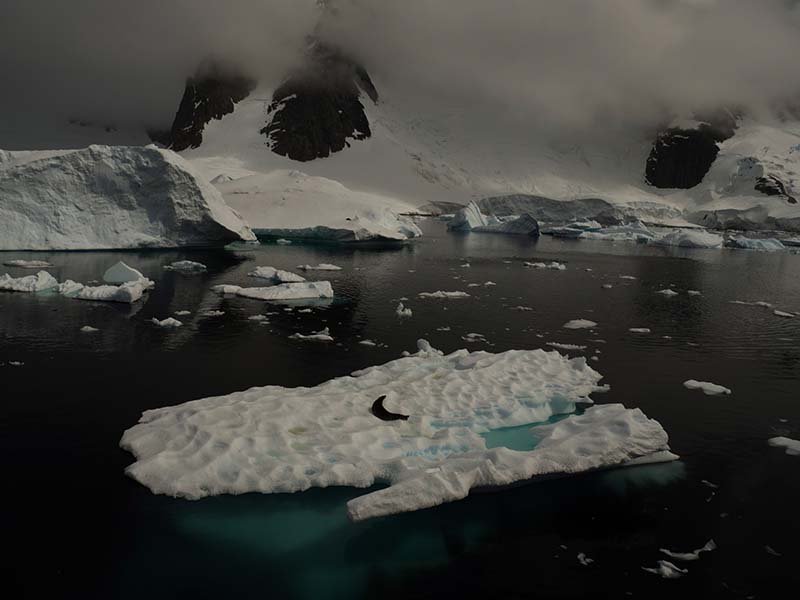
Perhaps it starts underground after years and years of droughts draining the life out of the soil much like in Australia. Or perhaps the changing winds and warmer currents rot away the core of the glaciers.
On February 6, 2020, weather stations recorded the hottest temperature on record for Antarctica. Thermometers at the Esperanza Base on the northern tip of the Antarctic Peninsula reached 18.3°C (64.9°F) The warm weather caused widespread melting on nearby glaciers.
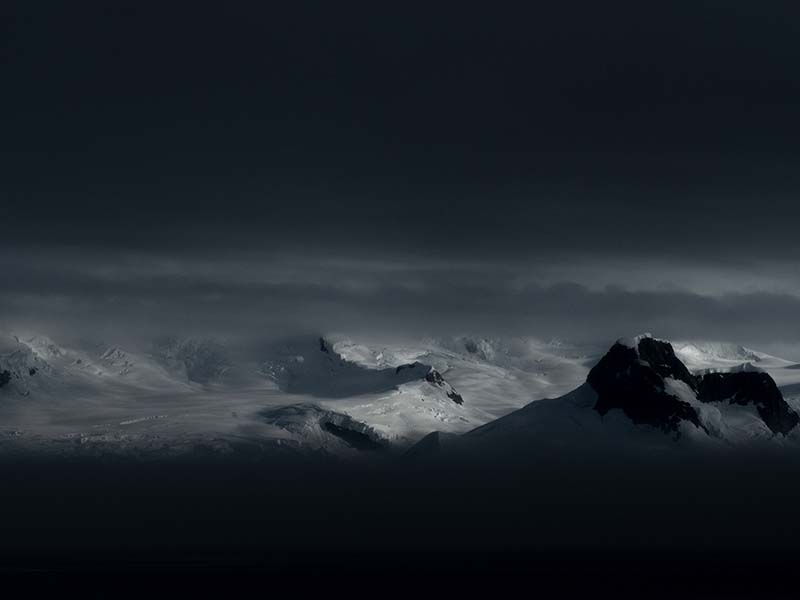
I imagine all the tiny snowflakes that had fallen over many lifetimes to build this masterpiece and all the life that depends on it. With the loss of sea ice, we face mass extinctions of wildlife and sea-level rise, which will ripple all across the globe.
‘The concept came to me during my latest trip to Antarctica in 2019/2020,’ she said. ‘It was when Australia was being ravaged by endless bushfires and at the same time, my health began to rapidly decline.
‘The beautiful fleeting sunsets in the Antarctic which bathed the ice in hues of orange and reds reminded me of the brutal fires in Australia, burning with such ferocity they continued to burn underground – via the root system of the trees. I remember the heartache I felt watching it all unfold from afar and at the same time witnessing the cracks appear in the Antarctic. I watched the snow turn red from an algae bloom and waterfalls of melted ice flow from the Antarctic mountains. It all felt very surreal. How something so grand can be equally so incredibly fragile.’
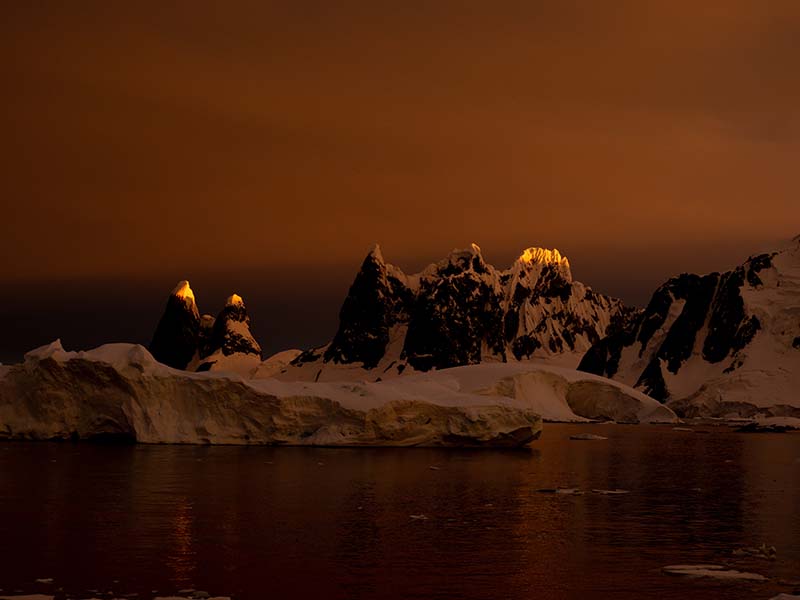
Likening what she saw to the cytokine storm that happens when our immune system is overtaxed, she added, ‘Our internal ecosystem isn’t too different. There is only so much that nature and life can handle before the inevitable storm. The End of the World/ Antarctica project speaks to that sense of urgency and the delicate balance of our ecosystem.’
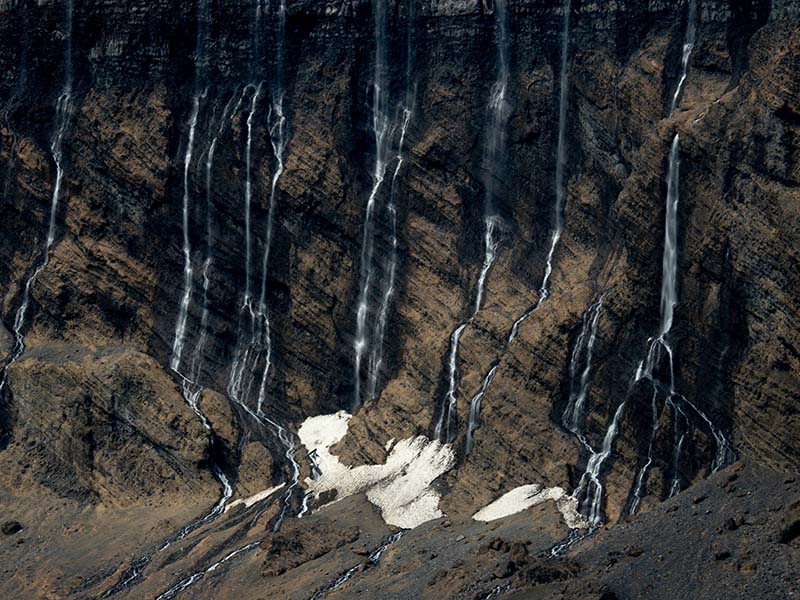
Warming conditions have created ice melt waterfalls in Antarctica.
When asked about the equipment she used, Michaela explained, ‘For my Antarctica work, I used the Olympus OM-D E-M1 Mark II and later the Olympus OM-D E-M1 Mark III. The weatherproofing is incredibly helpful in these conditions where there is constant sea spray and the weather can turn very quickly, from a beautiful sunny day to a snowstorm in a matter of moments. It was a big relief knowing that the weather sealing can withstand those kinds of conditions so I could continue photographing. The image stabilisation makes a world of difference. The OM-D E-M1 Mark III provides 7 stops of 5-axis Body IS or 7.5 stops SYNC-IS when used with compatible stabilised lenses like the M.Zuiko Digital ED 12-100mm f/4.0 IS PRO, which is the lens I used for most of my filming. Even though I was mostly filming from a moving zodiac, it made the footage feel as if we were gently gliding across the water.
‘The new OM-1 camera’s mage stabilisation now up to 8 stops with SYNC IS, which is an absolute game changer for me. It allows me to handhold the camera with long lenses such as the 300mm f/4 IS PRO Lens or the M.Zuiko Pro 150-400mm f/4.5 at very low shutter speeds with the images still being pin sharp.
‘This means I don’t need to carry a tripod and can camouflage myself a bit better in the environment. Being able to carry less weight gives me even more time in the field, which in the end is the most important thing – the aim is to be able to document unhindered and to be supported by the equipment you use.
‘What I am really impressed by is the quality of JPEGs straight out of the OM-1 camera. As a photojournalist I don’t always get the opportunity to process the RAW files and have to send unprocessed files straight from the field. The OM1’s image quality holds up beautifully, and the reason is a new stacked and backside-illuminated sensor and the new TruePic X processor.
Every photographer cares about producing high quality images, but for Michaela it is fundamental to her practice. ‘While documenting nature and wildlife I am often out photographing in low light conditions. I am looking for the early morning or late afternoon golden glow, and it’s also when wildlife is most active. Being able to photograph in low light conditions is essential, and the OM-1 camera has 2 stops better high ISO noise performance than the previous model, which is very helpful when documenting in really dark conditions.
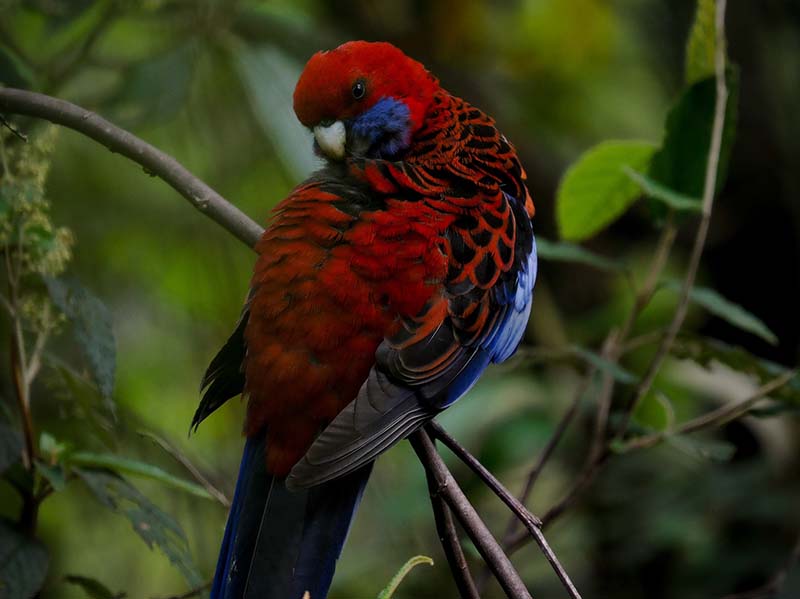
‘The image quality of the OM SYSTEM is unparalleled. The picture quality and colour tone are absolutely beautiful both digitally and in print. My environmental work tends to live in a large-scale world so having the option to print the images on a larger scale is crucial for my workflow.’
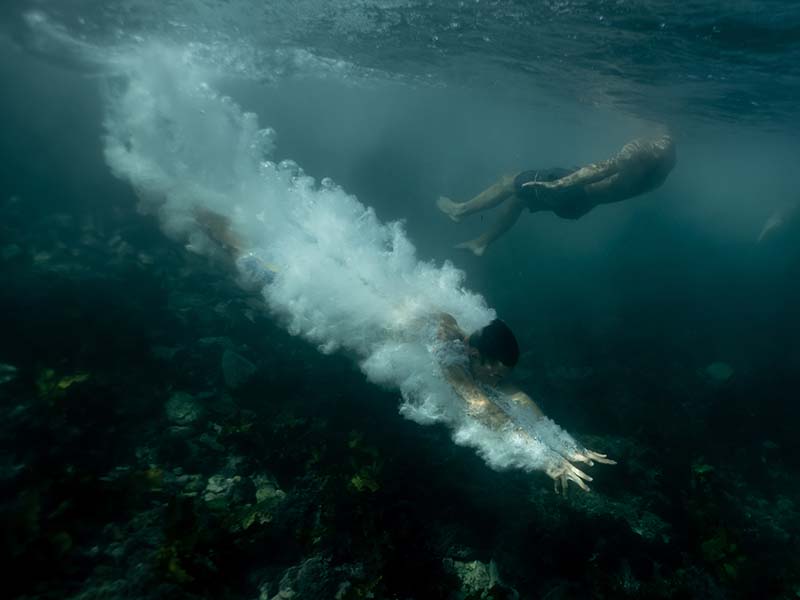
As for the rest of 2022, Michaela is as ambitious as ever. She’s already started work on a project that she said ‘was born out of my own experience with chronic health issues and the impacts of Covid-19 on access to medical care. Nearly half of Australians suffer from chronic disease, and First Nations people experience higher rates than other groups. The pandemic has resulted in the cancellation of elective surgeries, long waitlists to see specialists, and a general lack of access to medical care. For vulnerable communities, reduced access to care can be fatal. The project aims to shed light on the complex needs of people suffering from long-term health conditions, during the pandemic and beyond, and why successful vaccine rollout and considered management of a public health crisis is crucial for not only countering Covid-19 but also for those whose health and life depends on a functioning medical system.’
And, she adds, ‘I am working on photography and film projects that combine Indigenous knowledge and Western Science and projects that highlight impacts of climate change around Australia. The beauty (and curse) of freelance work is that you never really know what’s around the corner, and that is one of the most wonderful and exciting parts of this profession.’
See Michaela’s website
www.olympus-imaging.com.au
[embedded content]


